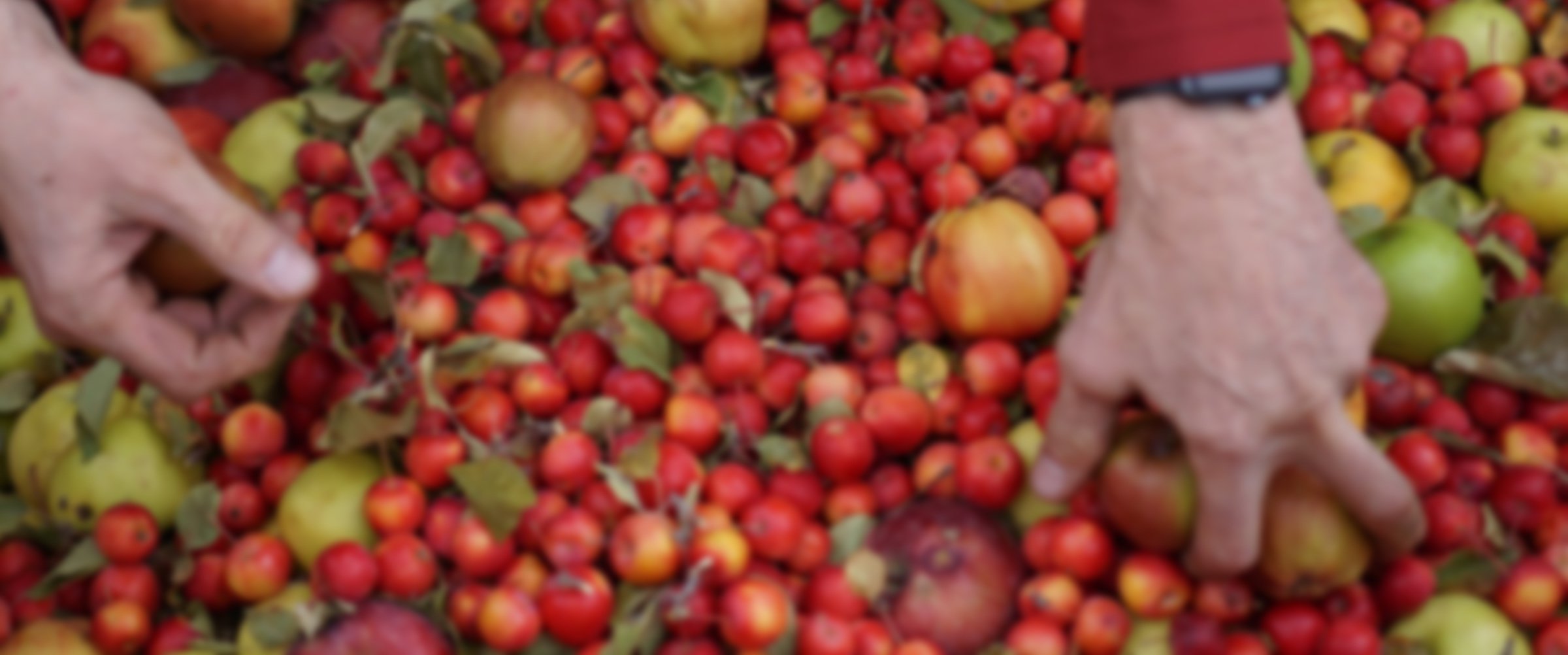
Fresh Picks
News, Thoughts & Observations
Growing Local: Hutton Settlement
We love our tiny taproom for several reasons, but first among them is that it tends to spur conversation, allowing us to get to know many of our patrons.
The 2020 Hutton Blend (Artwork by terrific local designer Chris Bovey!)
That’s how our relationship with Spokane’s Hutton Settlement began. When (at the time) Campus Director David Milliken dropped by, we learned about the institution’s plans to revive its farm-based programming – including its historic apple orchard. Predictably, chats about trees turned to the cider-making potential of apples still growing on the estate, along with what might get planted in support of Hutton’s plans.
Trees were few and crop yields light, but we found the idea of making a nano-batch from Hutton apples irresistible. Now in its second year, our “Hutton Settlement Estate Blend” utilizes a smattering of feral apples left from the historic orchard, apples from newly-planted trees, and roughly 30% of the yield from ornamental crabapple trees that line Hutton’s entry drive.
All six cases (nano-batch indeed!) from the 2020 crop – produced with native yeast and bottle-conditioned (a la Méthode Champenoise) – were donated to Hutton. None were offered for public sale, but we hear many were provided as gifts to lucky supporters and staff, or otherwise used to support Hutton’s terrific foster home mission.
The 2021 crop wasn’t much larger, but as with all things agriculture, patience is essential. David and his crew continue to plant new trees, and the tradition of making a cider from each year’s harvest is off to a great start. Who knows? In time, perhaps there’ll be an annual Hutton blend for public sale.
Ours is a tiny role, but Liberty is truly honored to partner with and support the long-term plans of Hutton Settlement. For more, see the foundation’s website, linked here.
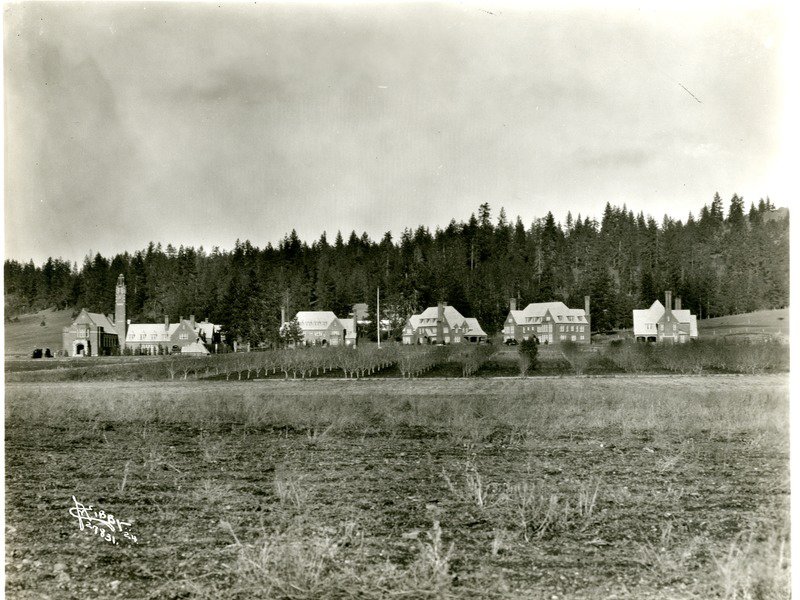
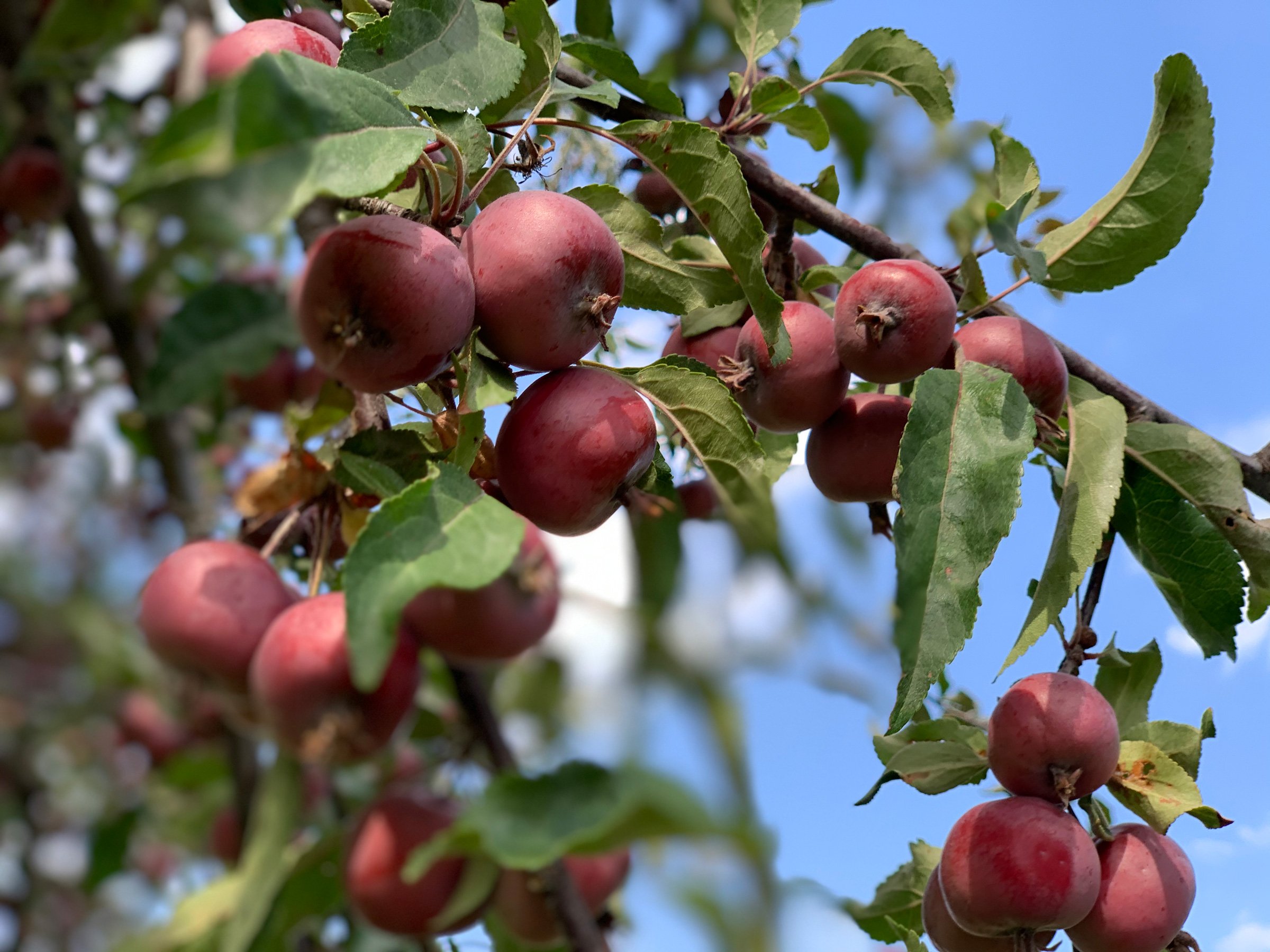
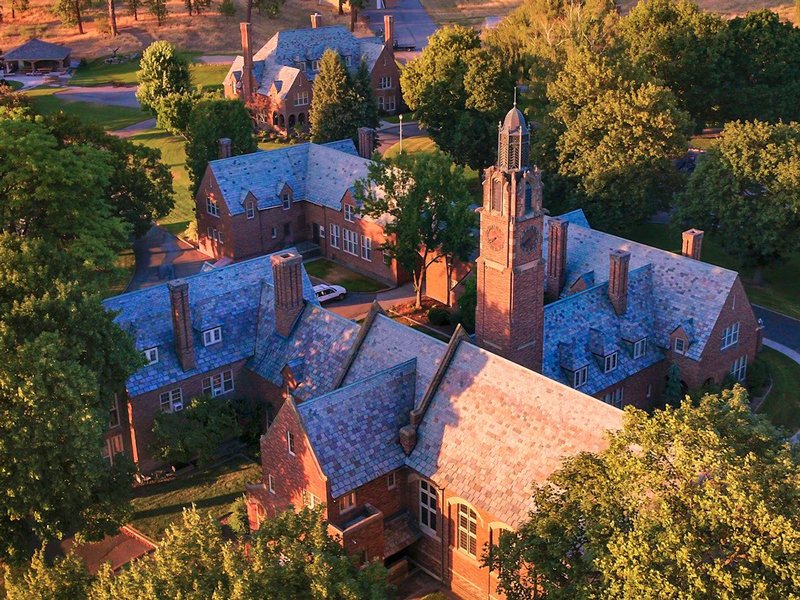
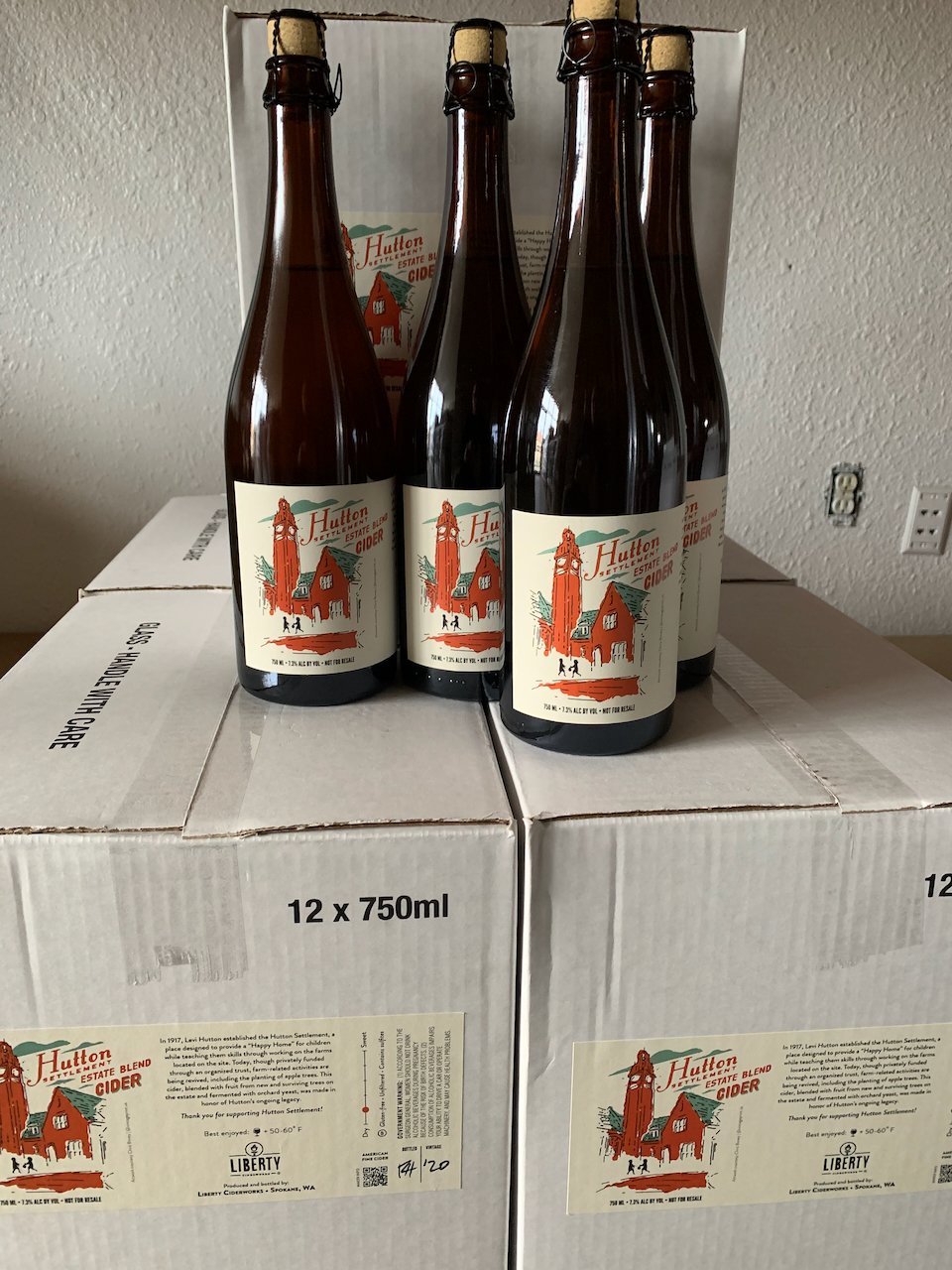
Ever-Amazing Apples
When Liberty first opened in 2013, few in America knew about cider, much less what it “ought to be.” In part because of this, two general approaches evolved in the US:
Seen here in mid-July, Bill’s red crabapples nearly tripled in size before harvest - finishing about the size of plums.
A beer-like approach, where apples are treated like a blank canvas and added flavors are the main focus. Just as (most) brewers have marginal concern about the specifics of grain, this approach allows cideries to use commodity-grade eating apples, perhaps specifying things like sugar and acidity levels, but little else.
A wine-like approach, where the flavors and characteristics of apples are treated as the primary, if not exclusive, focus.
If you’re reading this, you know we’re in the second camp. A tougher road for a business perhaps, but apples are our passion. It’s what we do.
Happily, apples are incredibly varied. Some, like Gravenstein, make for light-bodied, quaffable ciders, while others – Manchurian Crabapples, for instance – provide very intense flavors. Far from simply tasting “apple-y”, varietals may express a wide range of flavors, including tropical, stone fruit, berry, citrus or herbal notes.
But if there’s one type of apple we’re anxious to try, it’s the red-fleshed apple. These are relatively new on the scene, and even now are being bred across the globe as “the next big thing.” Most aren’t especially suitable for making cider. But some are – and some breeders, like our partner grower Bill Howell of Topcliffe Farms – are actually breeding red-fleshed varietals with cider in mind.
This fall, Bill was kind enough to share his entire crop of red-fleshed crabapples with us in exchange for helping assess their potential. But when we say “entire crop”, we’re not talking bins, bushels or even boxes. No, Bill’s first crop from his test trees added up to maybe one pound, providing around two cups of juice!
Despite being the smallest batch we’ve ever attempted, Bill’s plum-sized, deep-red apples have been impressive. Sugar levels in the juice were around 24.5 Brix, or enough to produce as much as 13.5% alcohol. Our meter measured 3.38 pH – about as tart as an average Granny Smith apple, but workable. We don’t have capacity to test tannins, but to taste, there’s plenty there. And perhaps most remarkable, the juice was deep, ruby-red – and unlike many red-fleshed apple ciders, remained so even after fermentation was complete.
The pictures below show the apples prior to pressing, and (in tiny amounts) as immature cider. At this stage, flavors seem muted but are reminiscent of wine, almost merlot-like. We’re now letting our nano-batch rest for a while (time is always an ingredient!) to see what develops.
We’re cautiously hopeful that two or three years from now, we’ll have cider for sale made with Bill’s red apples. And that once again, we’ll be able to showcase just how versatile, flavorful and amazing apples can be.
Thanks for supporting Liberty, and stay tuned.
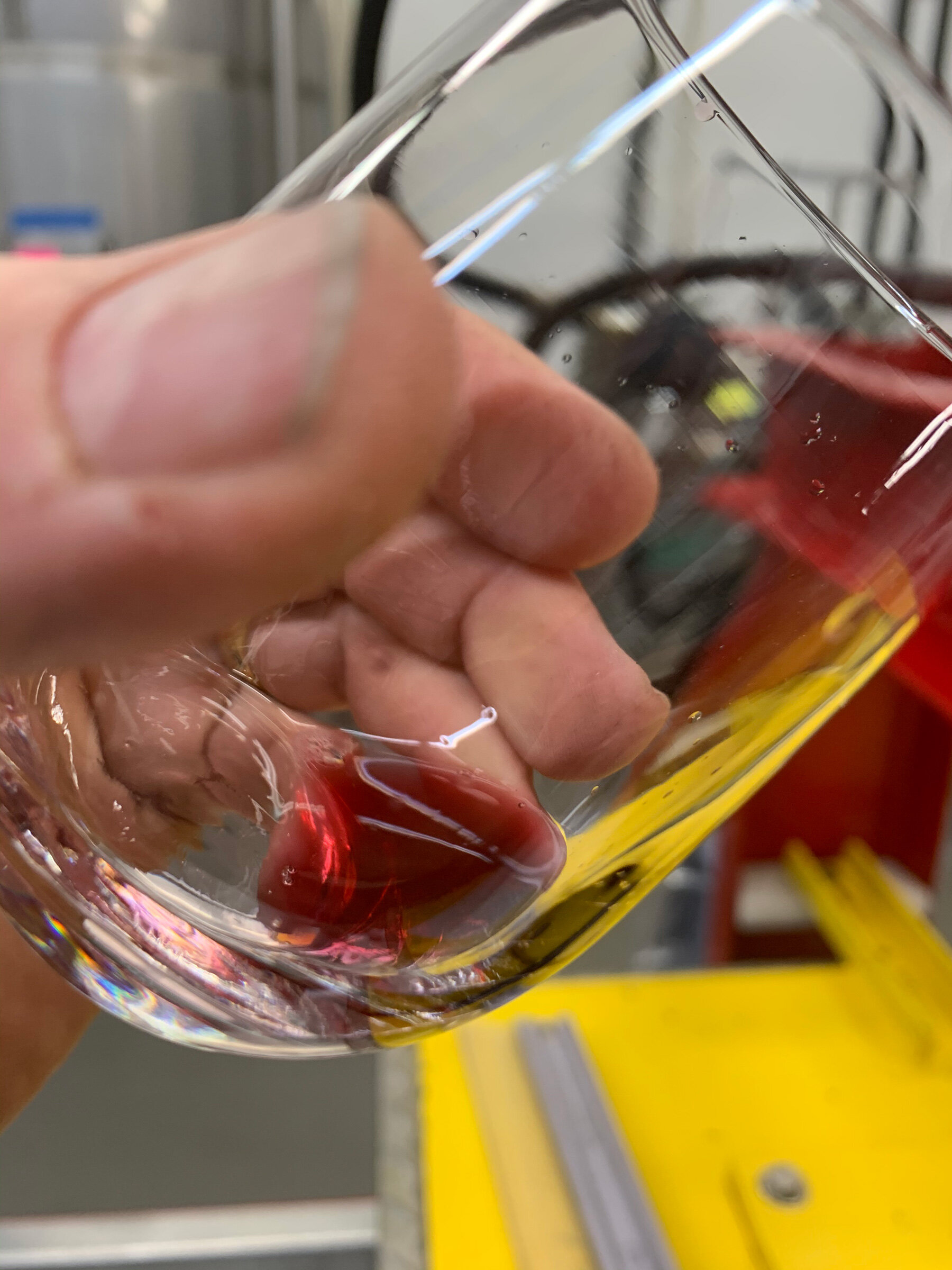
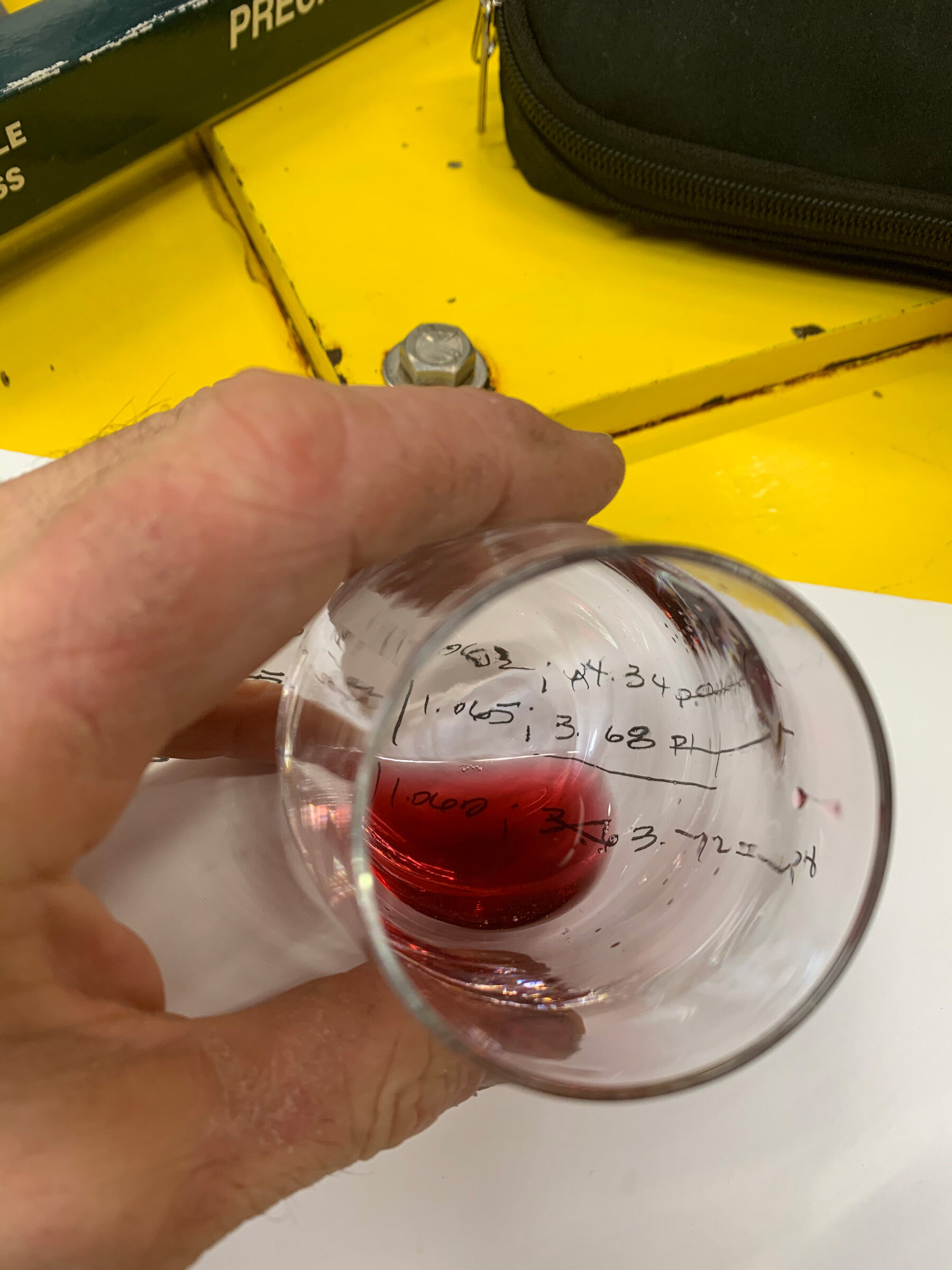
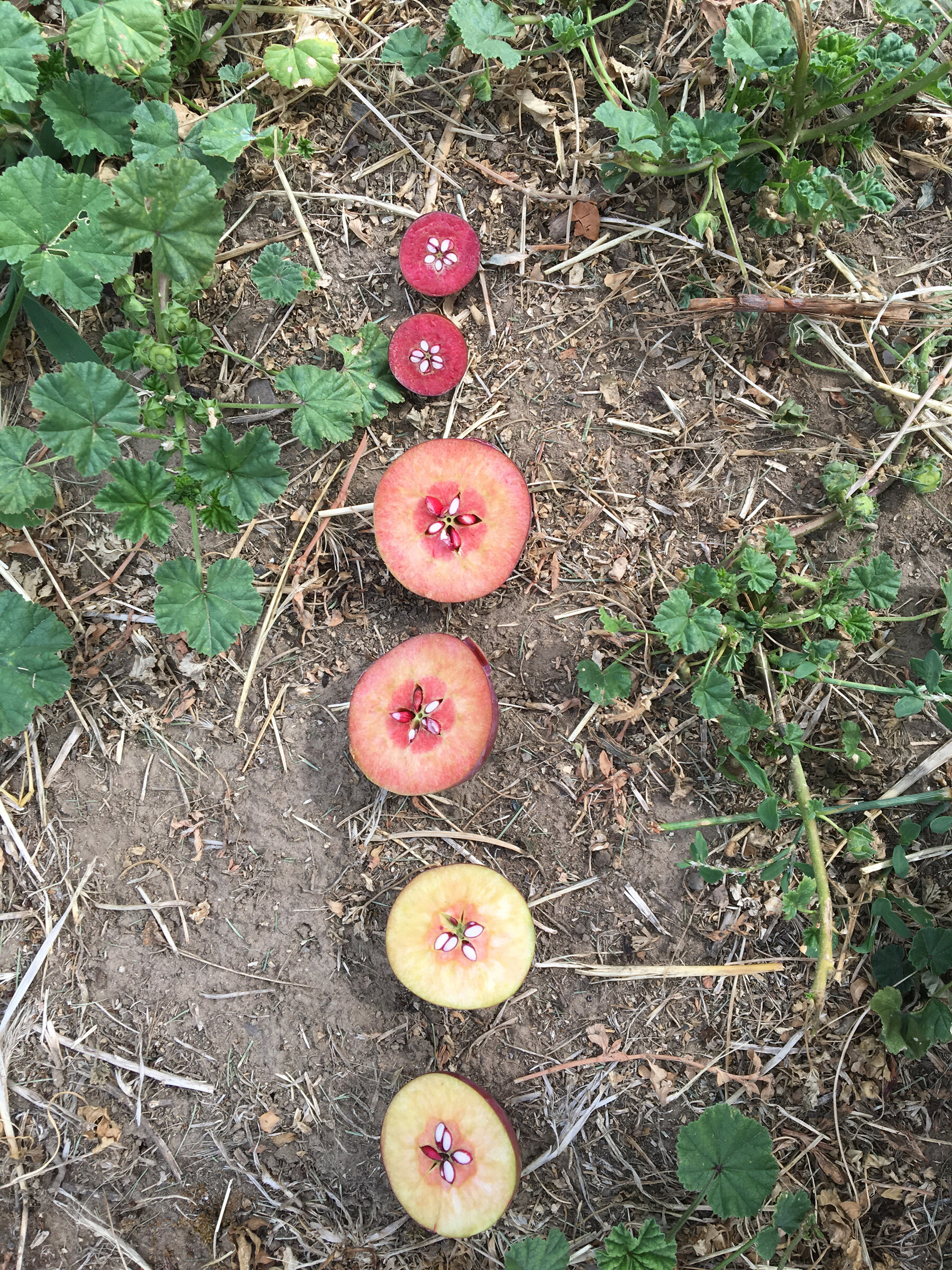
Holy Grail of Lost Apples
Towards the end of Apples: The Story of the Fruit of Temptation, author Frank Browning tracks noted antique apple specialist Tom Burford’s suspicions that he’d found Jefferson’s lost Taliaferro (pronounced “Taw-liver”) apple growing in the hills of Highland County Virginia.
Of the many thousands of named apple varieties lost since colonial times, the Taliaferro apple is considered the holy grail, owing to the fact that Thomas Jefferson considered them the best cider apple he’d ever experienced. Among several mentions in other writings, a letter to his granddaughter (with an enclosed cutting of scion wood) included this by Jefferson:
They are called the ‘Taliaferro’ apple, being from a seedling tree, discovered by a gentleman of that name near Williamsburg, and yield unquestionably the finest cyder we have ever known, and more like wine than any liquor I have ever tasted which was not wine.
Though Jefferson cared for close to 100 Taliaferro trees at Monticello, the original orchard is long gone. And as far as anyone knows for certain, so is the Taliaferro apple.
Burford, in correspondence with Browning, shared his story of a hillside farm belonging to a Mr. Conley Colaw where an apple matching the description of the Taliaferro still grew. And at the time (1994), Burford thought it very likely that Colaw’s apples were in fact Jefferson’s lost apple. Apples then recounts Browning’s trip to visit Colaw’s farm, where despite having missed the ability to view that year’s crop, he’s treated to a glass of cider made from the harvest, calling it “the richest, fullest-bodied farm cider I’d ever tasted, nearly dry.”
But certifying Colaw’s or any other apple as the Taliaferro may be impossible unless a more detailed, reliable description of the apple is found. Jefferson’s writings provide scant detail on their appearance or growing traits. Boston pomologist William Kenrick provided the only published description of the Taliaferro in 1835:
The fruit is the size of a grape shot, or from one to two inches in diameter; of a white color, streaked with red; with a sprightly acid, not good for the table, but apparently a very valuable cider fruit. This is understood to be a Virginia fruit, and the apple from which Mr. Jefferson's favorite cider was made.
Sadly, Mr. Burford passed away in April of this year. And other candidate apples – including some nominated by Burford as well as several others – have been proposed since Browning’s book was published in 1998.
What we do know is that the tree that grew the apples in Liberty’s 04.20 nano-batch cider came from cuttings obtained from Mr. Colaw’s tree in Highland County Virginia by (the former) Orchard Lane Growers, Gloucester VA – grafted to rootstock still growing at an orchard owned by our friend Tim Steury in Potlatch Idaho.
Tim claims the apple seems “finicky” when grown in our climate, and notes that cider made during years when the tree bears heavily is of lesser quality than years when the crop is thinner. The batch we’ve made from his trees began with small amounts of juice obtained over the course of two years, with the first batch frozen and stored for blending with juice pressed the following season.
Is this cider made with the real Taliaferro, Thomas Jefferson’s favorite apple? We’ll probably never know for sure. But it’s fun to reflect on the story, and holy grail or not, we think it’s a truly fine cider.
In Love with The Palouse
Owing in part to needs for our new website, cidermaker Rick and his wife Charlotte took a recent trip to Steptoe Butte, a quartzite mound overlooking the Palouse – an amazingly beautiful landscape just south of Spokane where (among vast wheat and legume farms) two of our partner orchards grow.
For those that live nearby, visits to the area are a must-do, taking in views as seasons change from luminescent green in spring, to lush, tawny brown in summer and fall, to whites and shadowy blues in winter. For locals and those living much further away, the story of the Palouse has its own merits, with a solid introduction available on Wikipedia.
But beyond the above urgings to visit and learn more about the land we’re so in love with at Liberty, this post is merely to show off a few of the snapshots taken by Rick and Charlotte. Here’s the Palouse in late spring, full of fresh life and vibrant colors. ❤️
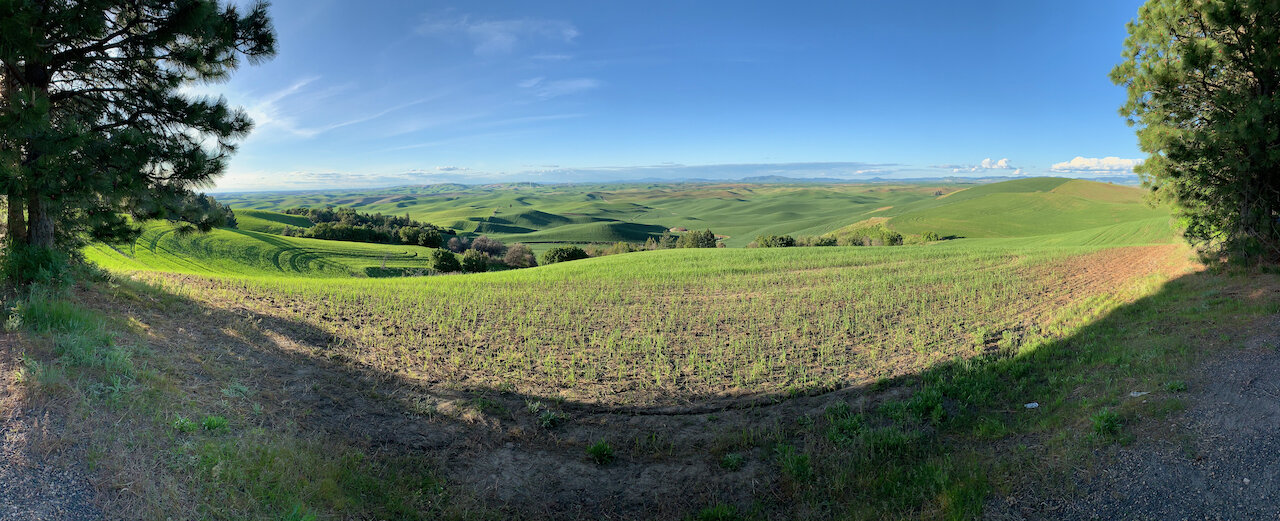
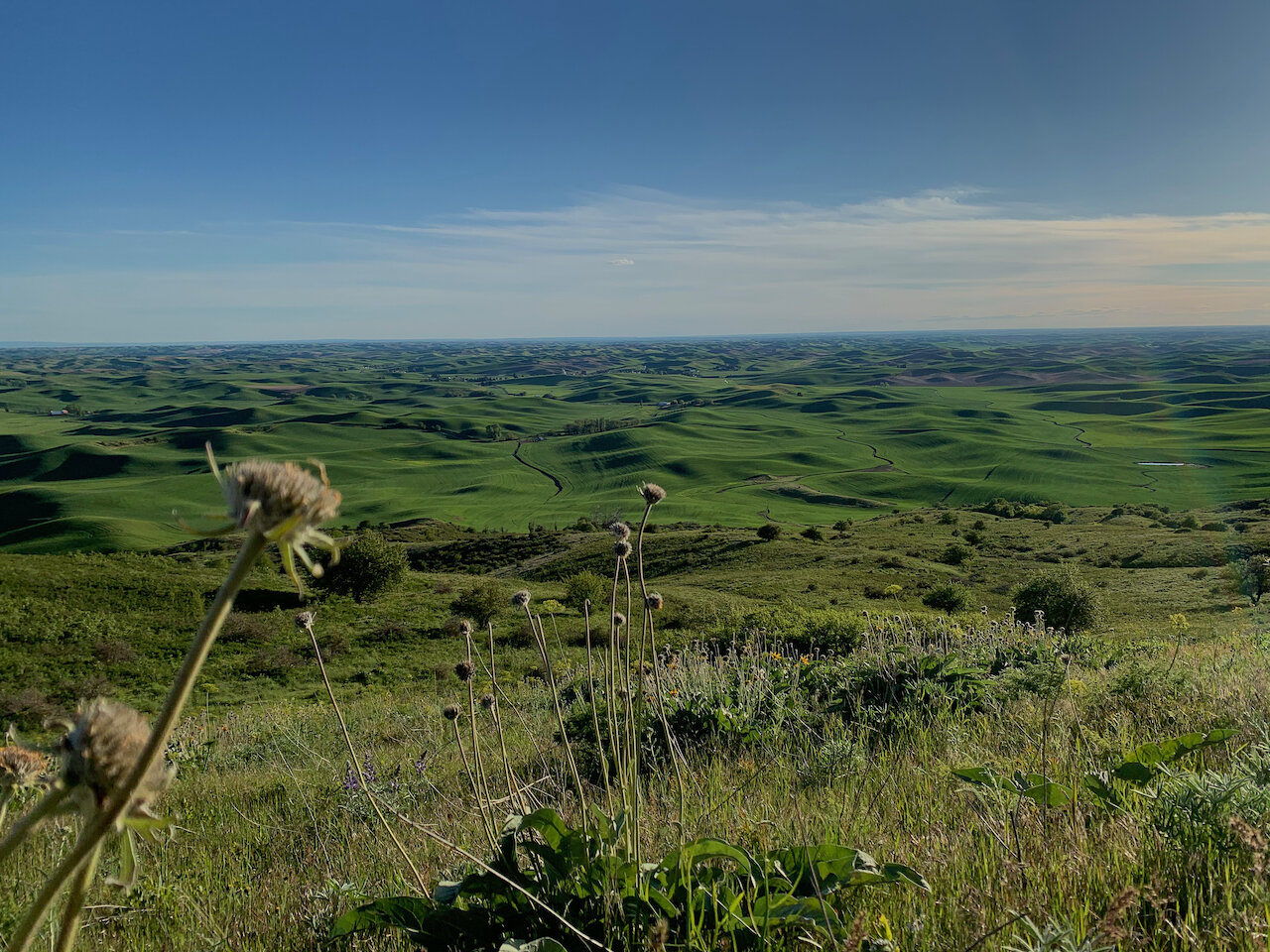
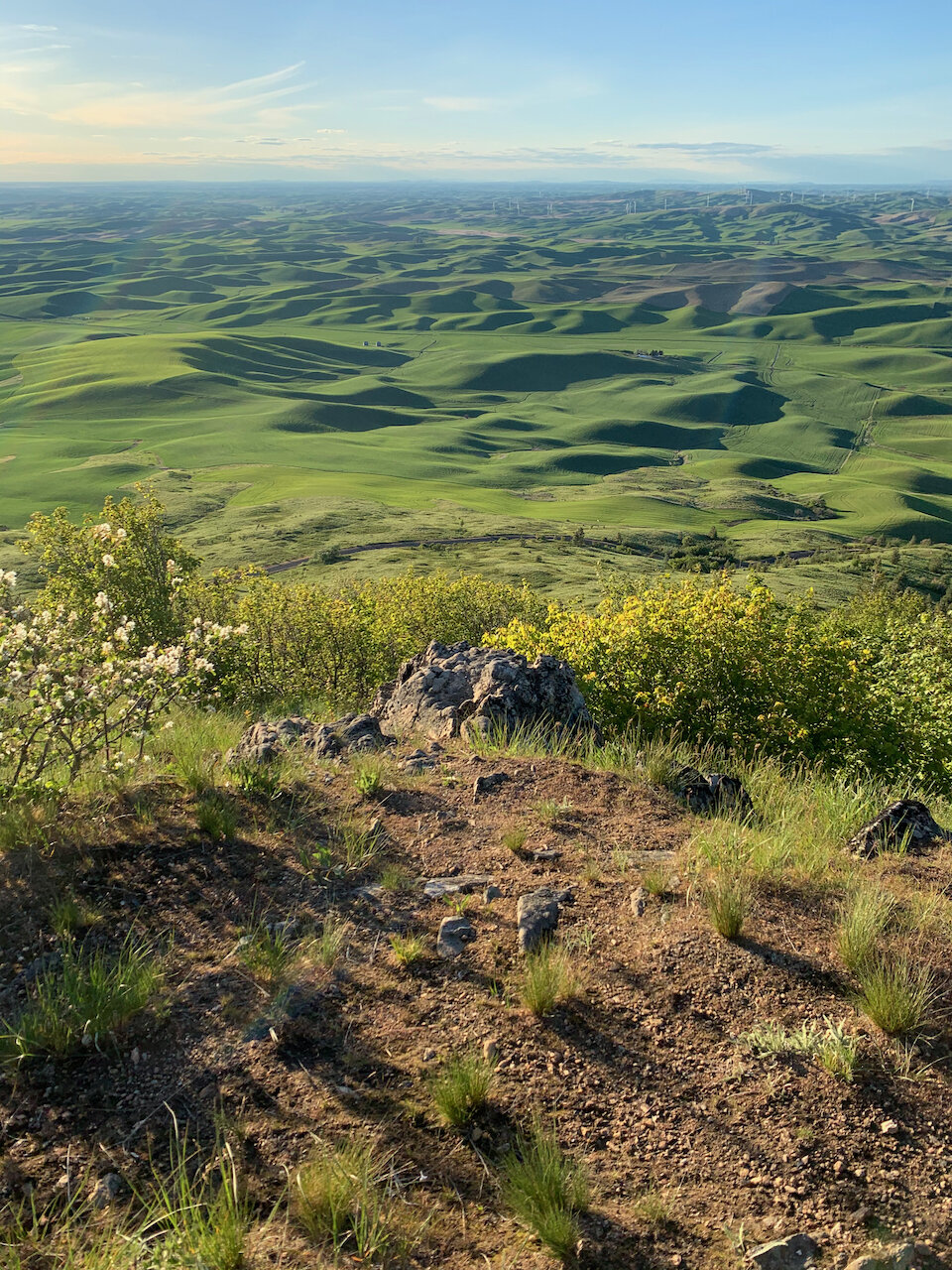
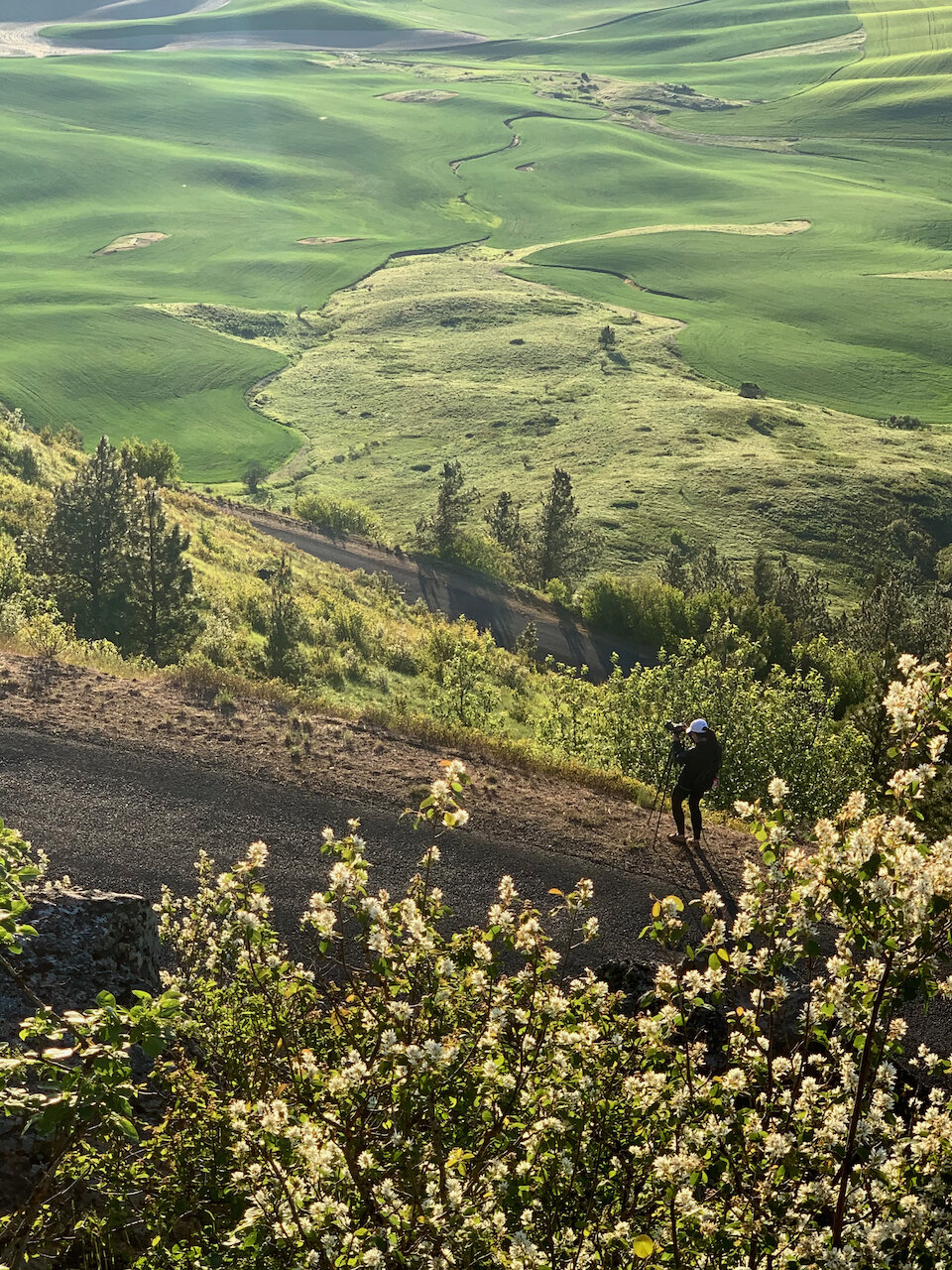
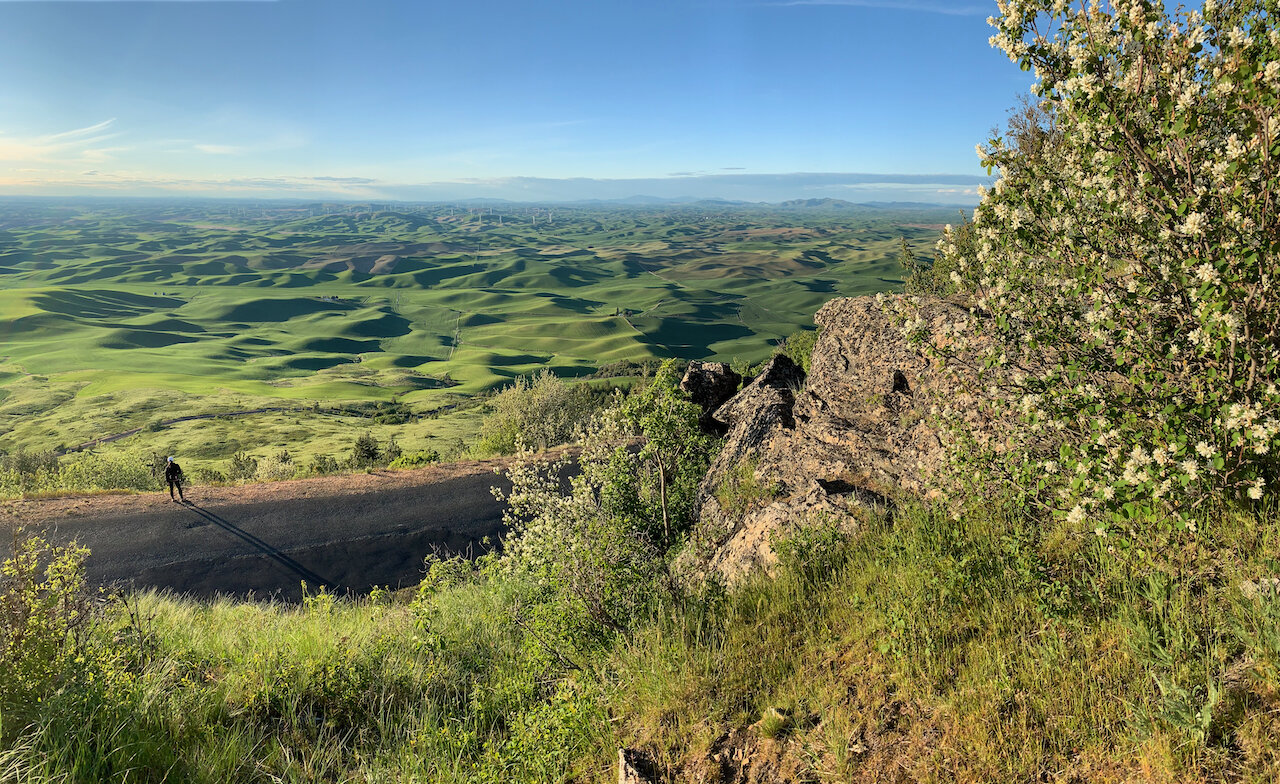
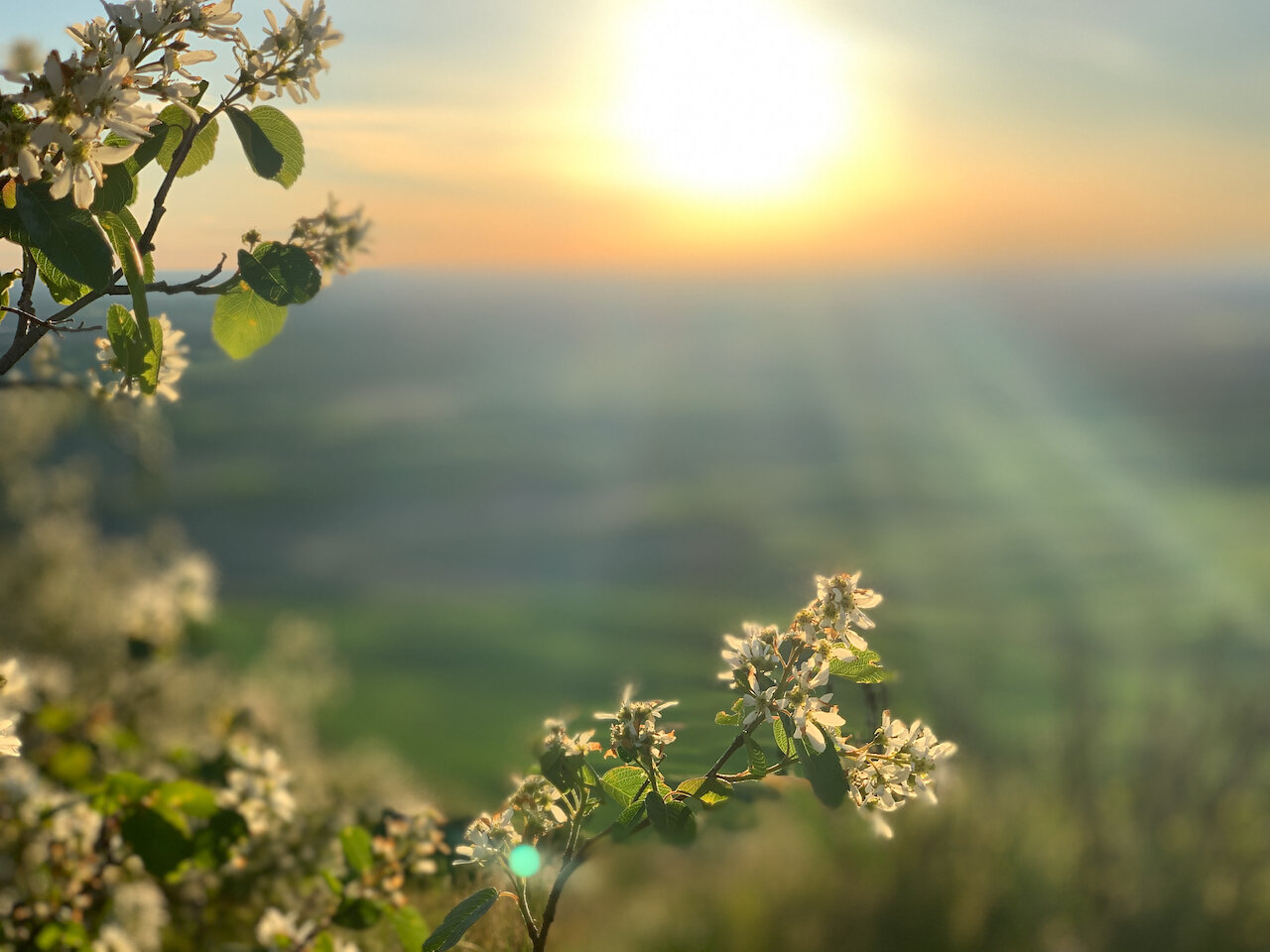
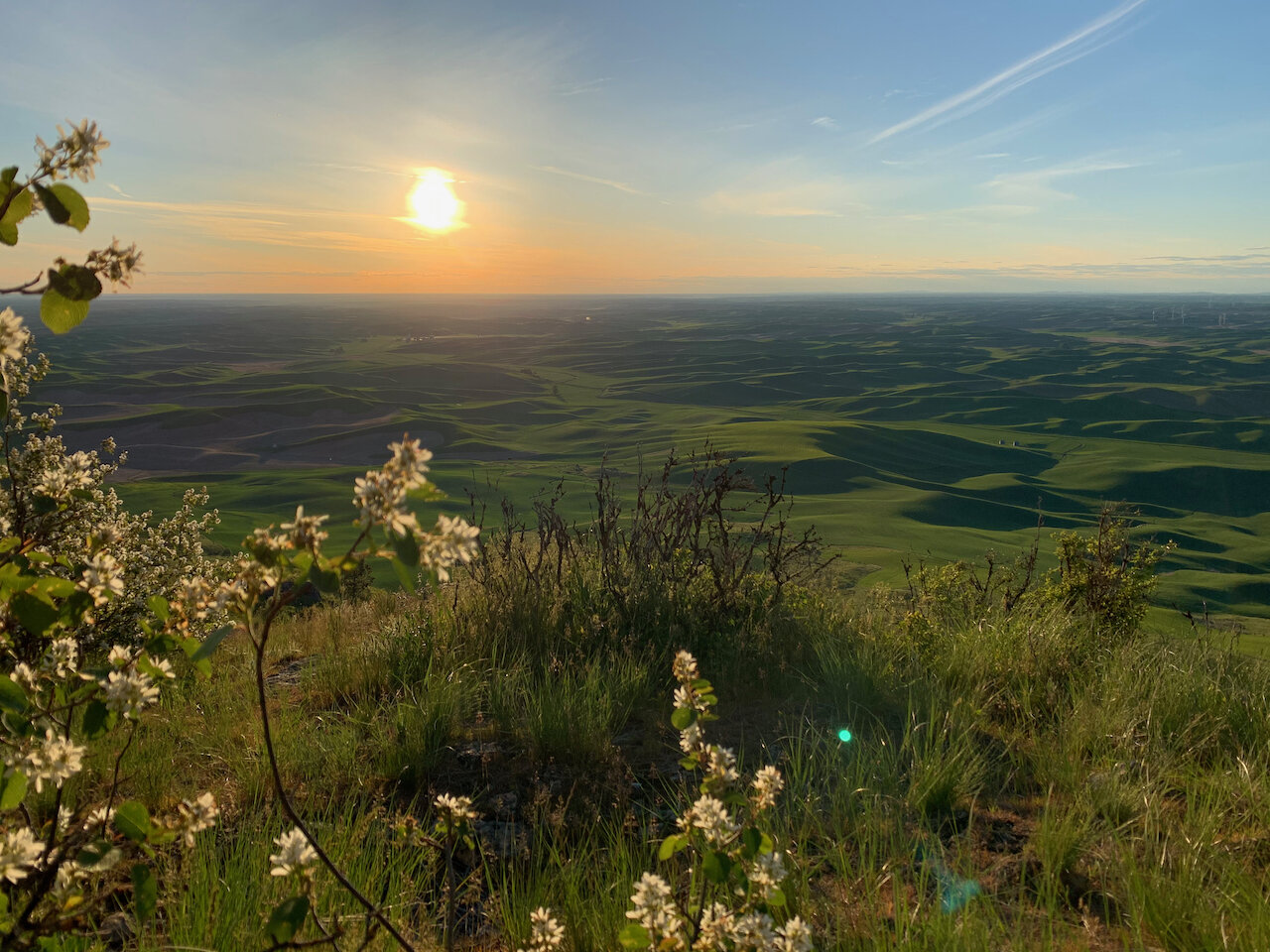
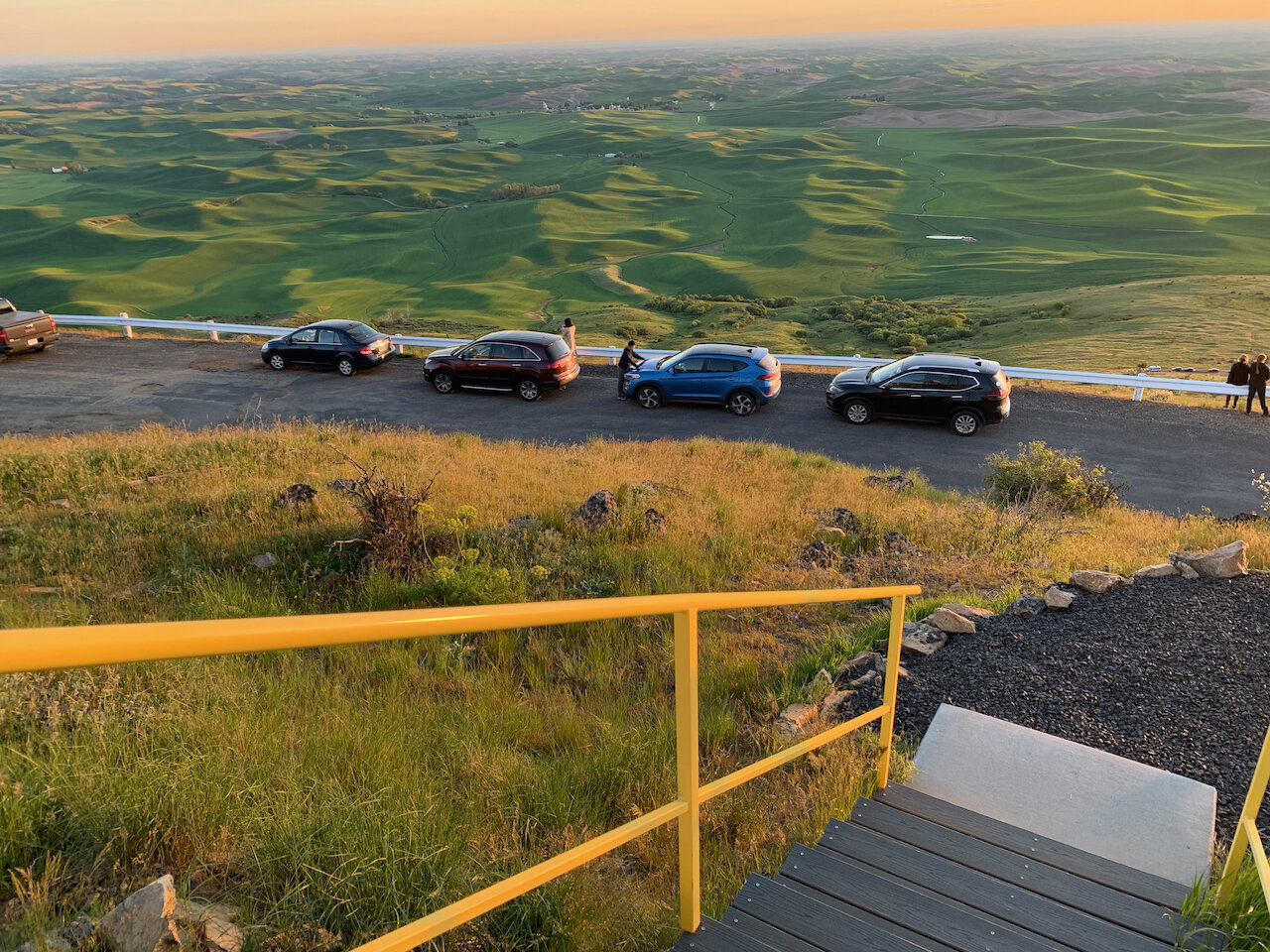
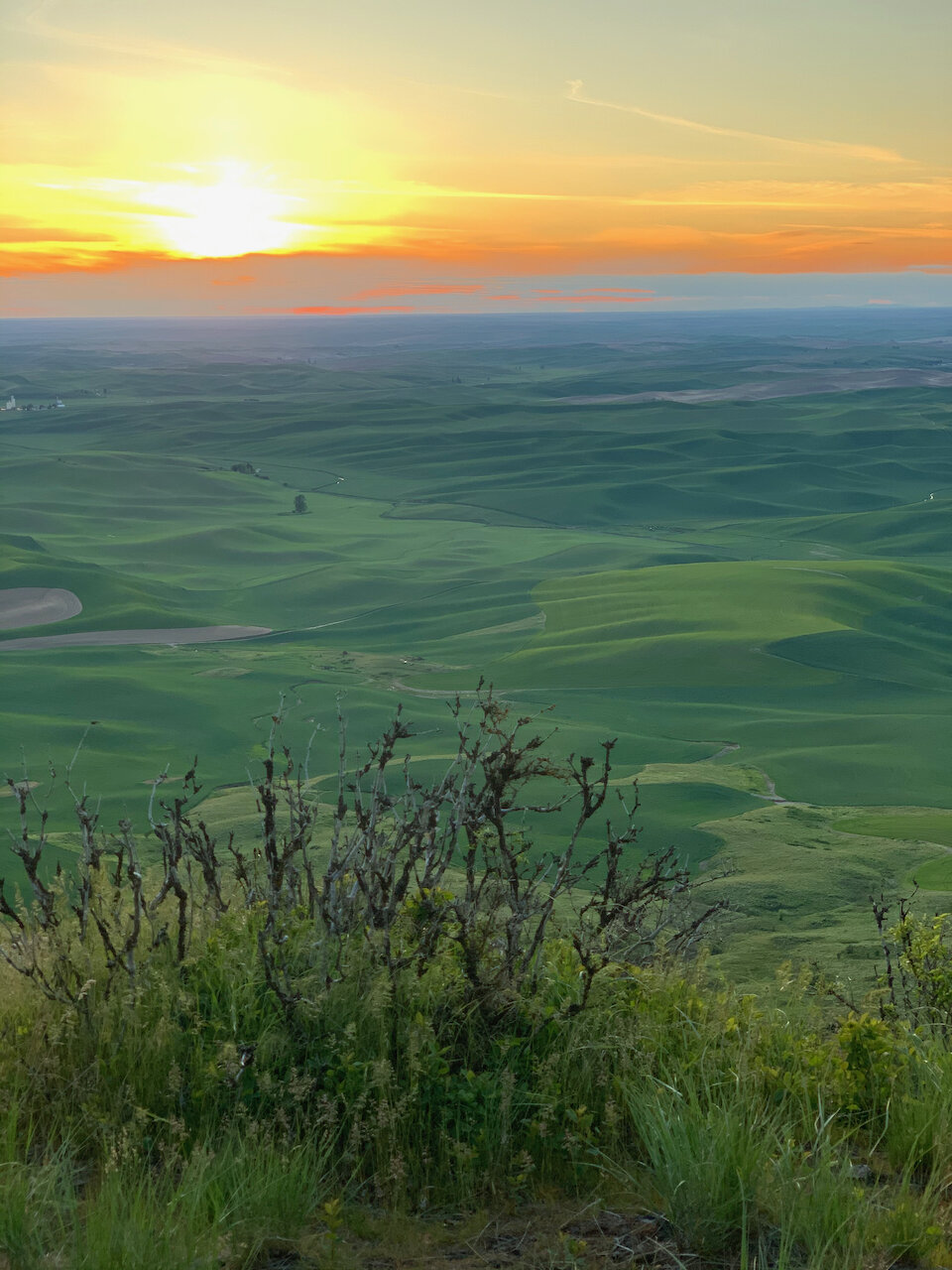
COVID-19 Update
After several weeks of near-lockdown, State officials have determined Spokane County eligible for partial re-opening of stores and restaurants under Phase 2 of the Safe Start Washington plan.
Effective Saturday, May 23, our taproom will be open for regular service with several safety-related restrictions listed below. We’re also resuming normal business hours, though we may adjust these according to demand.
Per Phase 2 Safe Start Washington guidelines, here’s what to expect when you visit our taproom:
All orders will be taken at the bar register
There will be no paper menus
Hand sanitizer will be accessible for all patrons
Bar seating is not allowed
Weather permitting, our outdoor seating (three tables) will be set up, spaced and operated as regular tables
Tables will be cleaned and sanitized between each use
Employees will wear masks and utilize disposable gloves while serving customers
Spokane County officials have strongly recommended everyone wear masks while in public, and while this isn’t enforced, we hope our customers will take part
We will maintain a voluntary guest log, allowing officials to contact customers if transmission-related news or needs arise.
Like many small businesses, we’ve built Liberty as a place that fosters friendships and community. For this reason, we recognize things won’t feel the same. But with the health of our friends and community at-risk, we also know that “the same” just isn’t possible…at least for now.
In the meantime, we’re thankful to be able to re-open under Safe Start Washington, and yes, see and reconnect with many of you, our dear friends and fellow cider-lovers.
We look forward to seeing you!



